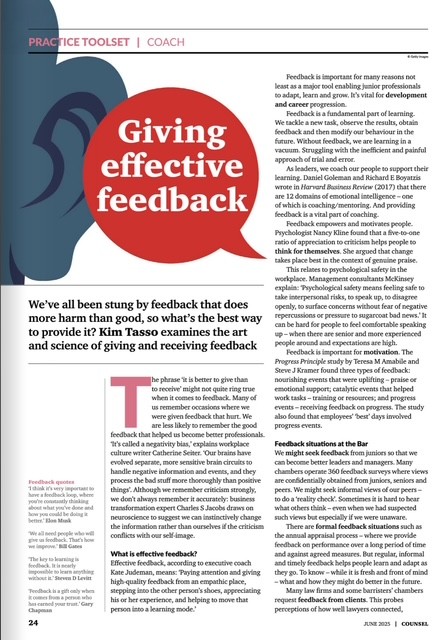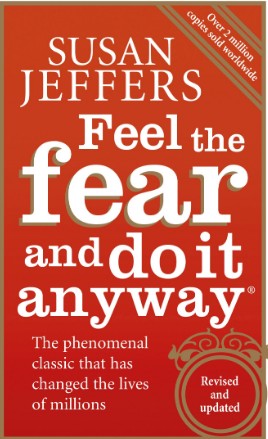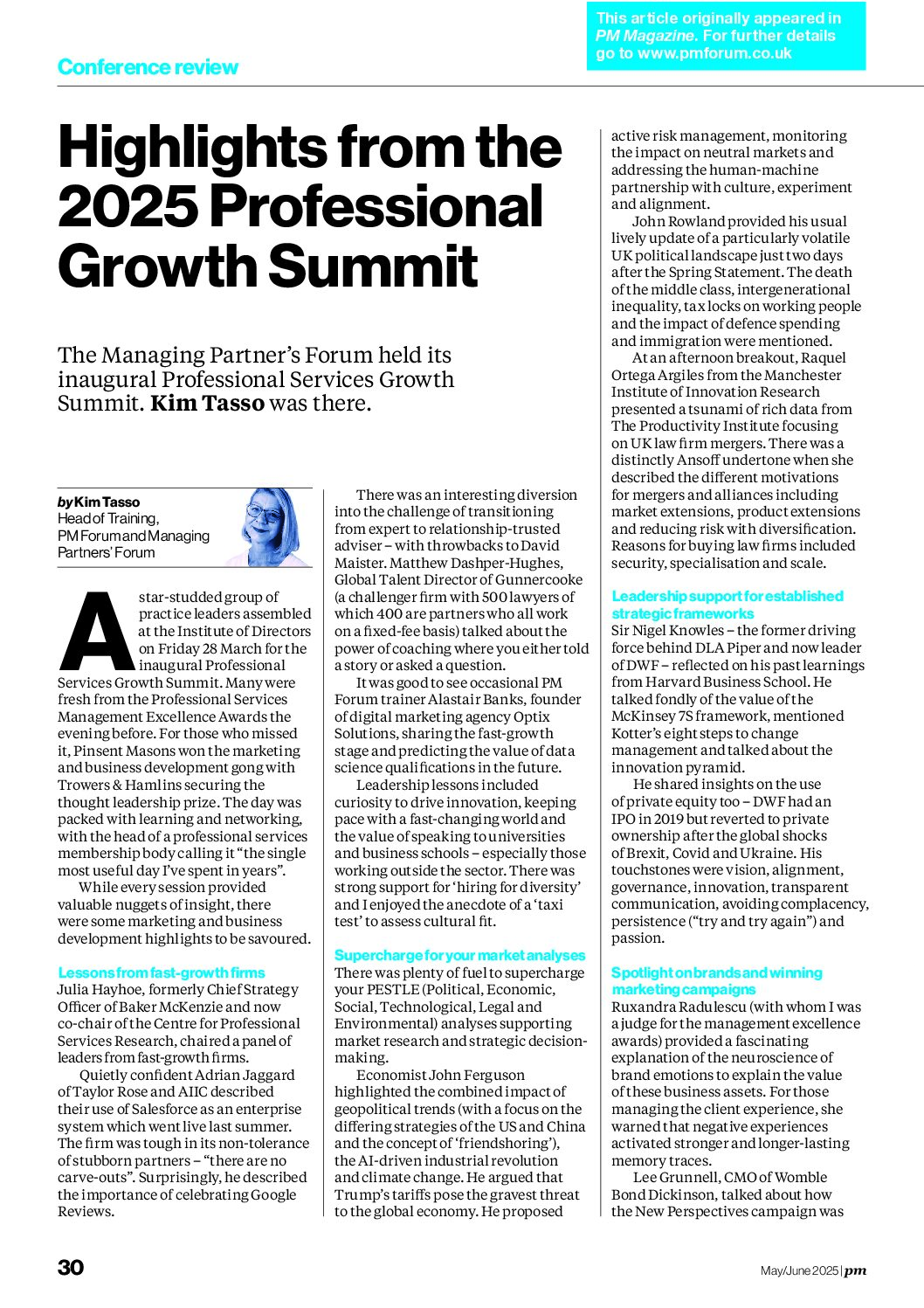I was recently asked to facilitate a partner strategy session where the focus was on authenticity, values and culture. It was a highly interactive session with participants considering their personal values in a structured way before discussing them in peer groups. It was a softer parallel process alongside a more analytical strategy development process.
Authenticity
Authentic means representing one’s true nature or beliefs and being true to oneself. Humanistic psychologists say that authentic people possess a number of common characteristics that show they are psychologically mature and fully functioning as human beings.
Authentic people:
- Have realistic perceptions of reality
- Are accepting of themselves and of other people
- Are thoughtful
- Have a non-hostile sense of humour
- Are able to express their emotions freely and clearly
- Are open to learning from their mistakes
- Understand their motivations
They think inward and look outward, treat people with kindness and respect, live in the moment, are great listeners and are open-minded and fair to opportunities and people. Being authentic helps with the development of trust http://kimtasso.com/trust-better-business-relationships/
When we consider what differentiates a manager from a leader there are four areas that relate directly to authenticity – leaders are original, they inspire trust, they ask why and they are their own person.
Authenticity is one of the 10 attributes of a trusted adviser too.
Values
In a partnership, it is often the values that glue the partnership together – sometimes more so than the business aims and strategy which can be unclear or disparate.
Campbell MacPherson, in his excellent book “The Change Catalyst” http://kimtasso.com/book-review-the-change-catalyst-secrets-to-successful-and-sustainable-business-change-by-campbell-macpherson-change-management/ argued that the ingredients for building extraordinary leadership teams are:
- Clarity
- Alignment
- Engagement
- Clearly defined rules of engagement
- Shared objectives
- Respect
Personal values need to be aligned to the business purpose – answering the “Why are we in business?” that Simon Sinek refers to in his golden circle.
Clients too are interested in values. David Maister in his classic book “Managing the professional services firm” argues that clients qualify firms on technical criteria and then select on emotional criteria such as “Do I like you?” and “Do I want to work with you?” and, most importantly, “Do you have similar values to me?”.
Maister also said that a firm must have a sense of a mission beyond the 3Ss of (client) service, (financial) success and (professional) satisfaction. Common values may overcome differences in personal ethics where the drive towards achievement or altruism may differ.
The values based matrix maps an individual’s mind (rational), heart (emotional) and spiritual values against the mission (why), vision (what) and values (how) of a business.
Corporate culture
There are various definitions of corporate culture:
- “Behaviours that new employees are encouraged to follow” (Kotter and Heskett)
- “Norms for acceptable behaviour” (Hai)
- “Reinforces ideas and feelings that are consistent with the corporation’s beliefs” (Hampden-Turner)
- “Influences the external relations of the corporation, as well as the internal relations of the employees” (Hai)
Organizational culture means the vision, tone and mentality of a business and its employees as a whole.
Metaphors are a useful way to describe culture. In professional service firms you may have hawks and doves, lone wolves and worker bees and hunters and gatherers. Morgan offered metaphors such as machine (change planned and rolled out from the top), organism (data presented to individuals who decide collaboratively) and political (a powerful group in leadership). There are many models which look at differences in, for example, sociability and solidarity (Goffee and Jones) and internal integration and stability (Cameron and Quinn).
John Coleman, writing in Harvard Business Review, identified six components of a good corporate culture:
- Vision – the purpose of the organisation
- Values
- Practices
- People
- Narrative – the history of the organisation as a story
- Place – workplace design
As well as being important for recruitment, retention and productivity, corporate culture is also important for innovation. The University of Southern California and the University of Minnesota say: ”Corporate culture is, above all else, the most important factor in driving innovation.”
Related Posts
- Book review – Making sense of change management: A complete guide to the models, tools and techniques of organisational change by Esther Cameron and Mike Green
- Driving change in professional practices – the interesting bits?
- Strategy development insights: Curiosity, challenge, creativity, co-creation, culture and change
- Getting what you want and how to say “No” – Assertiveness skills
- Coaching skills – The power of questions (2017)
- Key Account Management KAM – Managing key client meetings
- Persuasive writing – Nine quick tips
- International relationship management – Highlights from a talk by Allan Evans at BDO accountants
- Encouraging solicitors to sell – Aligning cross-selling with professional conduct rules
- Internal communication – Why, how and what?
- How do you make a personal impact? Stand out, speak up and make a difference
- Strategic thinking – Audits, assumptions and alignment
- System review: Performance management in the professions - Performance Leader system
- Strategy silos – is marketing guilty too? Align, integrate, focus, educate and champion
- Key Account Management (KAM) – Top 10 tips for designing and implementing a KAM programme
- 10 takeaways from a workshop on buy-in (Guildford, 2018)
- Book review: “The change catalyst – secrets to successful and sustainable business change” by Campbell MacPherson (Change Management)
- Book review: Reinforcements: How to get people to help you by Heidi Grant
- Book review: Professional services leadership handbook by Nigel Clark, Ben Kent, Alastair Beddow and Adrian Furner
- An MBA is great – but you’ll need soft skills to make an impact
- Book review of Better Business Relationships by Paul English of Grant Thornton International
- Environmental analysis (SLEPT) and planning - Future of Jobs Report 2018 (impact of technology)
- Be more onion, time out from the tsunami and other strategy insights
- Change management and Employee engagement
- Better Business Relationships and DACRIE - A model to enhance business relationships
- Future Marketing Manager – A checklist for success and how to get promoted
- Book review: Managing key clients (securing the future of the professional services firm) by Kevin Walker, Paul Denvir and Cliff Ferguson
- Video – The art of storytelling
- Change management: Your personal transition - Endings, neutral zone and new beginnings
- Book review: Nudge: Improving decisions about health, wealth and happiness by Richard H Thaler and Cass R Sunstein
- Active Listening (Video)
- Future Marketing Manager – Eight steps to manage virtual teams
- How to facilitate groups – 2 (Herding Cats)
- Leadership teams: Maverick Magpies and Predictable Pigeons (Video)
- Avoid the revolving door - Recruiting and retaining marketing and business development professionals in PSFs
- Storytelling book reviews: The Story Advantage by LJ Bloom and The Story Factor by Annette Simmons
- Be more strategic – Strategy in a post-Covid19 world
- BCO’s Inspirational Leaders – Toby Courtauld of Great Portland Estates
- Improve your strategic thinking – Seven insights (2020)
- Facilitation
- New Leadership Development Programme from the Managing Partners’ Forum – Consensus through Collaboration
- Book review: Lost connections – Why you’re depressed and how to find hope by Johann Hari
- Book review: Neuroscience for organizational change by Hilary Scarlett
- Why do you need a business plan?
- Top six leadership qualities?
- Book review: The Management Shift – How to harness the power of people and transform your organization for sustainable success by Vlatka Hlupic
- Strategy basics – Mission and vision statements with hedgehogs and helicopters (Video)
- How to facilitate groups
- Book review: Legacy – What the All Blacks can teach us about the business of life by James Kerr (Leadership, culture, values and change management)
- Be more visible – the PVI model
- Changing behaviour in the workplace to boost productivity – Insights from psychology
- 12 thoughts on delegation, coaching and team management (2019)
- Don’t try to eat the white elephant whole – thoughts on change management and leadership
- Conference report: British Psychological Society’s (BPS) Psychology means business
- Strategy basics - Mintzberg
- Be more confident and convey confidence
- Technology and psychology skills needed
- Non-Executive Directors: Benefits for professional service firms
- Book review – Key Coaching Models by Stephen Gribben (and other coaching books)
- Effective marketing – a discussion with managing partners
- Cross-selling – The Big Questions
- Why Client Experience Management CEM is all the rage…
- Change management – Millennials, metaphors and resistance
- Client Experience Management CEM – Two research reports
- Marketing planning in a nutshell










